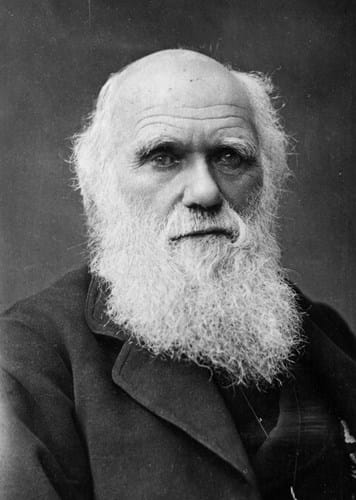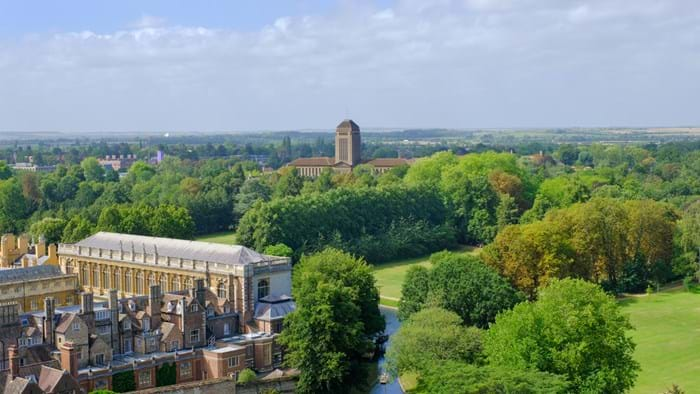
The university now believes the notebooks, first listed as missing in January 2001, have been stolen.
Dr Jessica Gardner, university librarian and director of library services since 2017, said: “We would be hugely grateful to hear from any staff, past or present, members of the book trade, researchers, or the public at large, with information that might assist in the recovery of the notebooks. Someone, somewhere, may have knowledge or insight that can help us return these notebooks to their proper place at the heart of the UK’s cultural and scientific heritage.”
The theft has been reported to Cambridgeshire Police and recorded on the national Art Loss Register and added to Interpol’s database of stolen artworks.
The university has taken advice from security experts and is working with partners in the book trade, including the Antiquarian Booksellers’ Association (ABA).
The notebooks were removed from the Special Collections Strong Rooms for photography in September 2000, with the photography request completed in November 2000.
During a subsequent routine check in January 2001, it was found that the small box containing the two notebooks (which is about the size of a paperback book) had not been returned.
For many years, the library believed that the notebooks had been misplaced in the vast storerooms (home to around 10 million books, maps, manuscripts and other objects across more than 130 miles of shelving).
At the start this year a new extensive search was arranged by Dr Gardner but they were not found.
She said: “Security policy was different 20 years ago. Today any such significant missing object would be reported as a potential theft immediately and a widespread search begun. We keep all our precious collections under the tightest security, in dedicated high security, climate-controlled strong rooms, meeting national standards.
“The building has transformed significantly since the notebooks were first reported as missing, in terms of additional security measures such as new strong rooms, new specialist reading rooms, CCTV, enhanced access control to secure areas, and our participation in international networks on collections security.”
The ‘Tree of Life’ image forms part of one of Darwin’s manuscript notebooks. The notebook in question is stored in a blue box, along with a second similar notebook, where Darwin develops his theory in terms of geographical distribution, the origin of humans, and classification by descent.
Darwin sketched out his ideas around an evolutionary tree in summer 1837, having recently returned from his trip around the world aboard HMS Beagle, more than two decades before he published a more fully developed tree of life in On the Origin of Species.
The notebooks are known as the Transmutation Notebooks given that he theorised for the first time how species might ‘transmute’ from ancestral to later forms.
The manuscript content of the two notebooks had already been digitised, so they are available via the Cambridge Digital Library, but the university is still hopeful of the recovery of the originals.

A view of University Library from St Johns College at Cambridge. Image credit: Cambridge University Library.
The book trade does not believe these notebooks were stolen for financial gain or stolen to order and many believe the notebooks are likely to have been take by an opportunist who had access.
Angus O'Neill, security chair for the International League of Antiquarian Booksellers, said: “Cambridge University Library is to be commended on coming forward so that the international book trade can help with the notebooks’ recovery. Items like this could never be sold openly and we fervently hope that this publicity will lead to them getting back to where they belong.”
Book and map dealer Tim Bryars of Bryars & Bryars added: “If these manuscripts were offered for sale legitimately (if they had been passed down through the family, say) they might easily become the most expensive books ever sold.
“A single leaf from the draft of On the Origin of Species was sold at Sotheby's in 2018 for £490,000 (including buyer's premium). It was catalogued by the word: 104 words in 13 lines. A second leaf, just 56 words (but including the phrase 'natural selection') sold for £274,000.
“Back in 1999, around the time of the disappearance, a manuscript leaf from Origin went for £39,500 + buyer's premium (ie £45,425). That tenfold rise is supported by the price of other Darwin material.
“Notebook B contains the seismically important 'tree of life' sketch, reproduced on everything from silver lockets to facemasks. Think of a number, double it, multiply by ten... but that's exactly why I can't believe the notebooks were stolen for financial gain.
“It's a theoretical value only. They couldn't be sold complete or dismembered and sold page by page. The manuscripts are digitised and online: anybody knowledgeable enough to pay for them as original Darwin manuscript material, would also recognise which manuscript they are from and where those manuscripts are supposed to be.”






